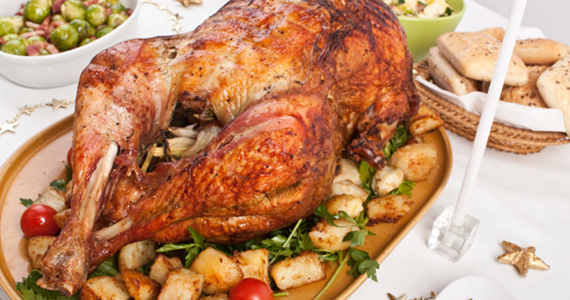A movable feast: Easy food safety tips at Christmas
With the Christmas season upon us, the Food Safety Information Council has issued its Christmas food safety tips.
The Council Christmas advice includes:
1. Talk to friends and family to work out who brings what.
Arrange to prepare and cook riskier foods like meat, seafood, turkey and fresh dairy or egg based deserts on site Those travelling long distances could bring less risky foods such as cakes, biscuits and Christmas puddings.
2. Turkey lovers be smart.
Turkeys can be big birds and a big problem if you don’t have a plan, so before buying a huge frozen turkey, read the label! Big turkeys take several days to defrost in the fridge, not to mention hours to cook properly, so think whether you really need one a whole, big one. Ask yourself what else are you serving and consider a part turkey, such as a breast, or turkey roll − much easier to defrost and cook to perfection.
If you still opt for the whole turkey and cannot source a fresh bird ask your butcher or supplier to defrost the turkey in their cool room so you can pick it up in time for Christmas and refrigerate.Whether full turkey or turkey roll, this meat must be cooked all the way through so use a meat thermometer to check that the temperature in the thickest part reaches 75°C. Because stuffing slows down cooking and cooling, it is best cooked separately.
3. Ham it up at Christmas and beyond.
Your Christmas ham will keep several weeks with proper handling. After reading the packaging labels, remove it from its plastic wrap, cover it with clean cloth soaked in water and vinegar so it doesn’t dry out, and store it in the fridge below 5°C. Reduced salt hams are now becoming popular but will not last as long as conventional hams so think how much you are going to use in the next week or so and freeze some for later.
4. Temperature danger zone.
Food poisoning bacteria can grow rapidly between 5°C and 60°C, so keep hot food hot, and cold food cold – including when transporting food. Use insulated containers or eskys and stack with plenty of ice bricks, frozen gel packs or frozen drinks.
5. Drinks on ice rather than cramming the fridge.
Drinks are actually “ice cold” if put on ice! A leak proof container is all that’s needed. Outside is best as it keeps the crowd outdoors ensuring the fridge will have a chance at running at 5°C or below, and that the cook can work in peace.
6. Refrigerate leftovers immediately after the meal.
If leftovers have been in the temperature danger zone for more than 2 hours they should be eaten or refrigerated immediately and for more than 4 hours they must be thrown out.Always store perishable leftovers in the fridge and use them up within two to three days. When reheating food ensure that it is hot all the way through (use a thermometer to ensure it is at least 75°C in the centre).
For more information, see the Food Safety Information Council’s holiday season fact sheet.
The Food Safety Information Council is Australia’s leading disseminator of consumer-targeted food safety information. It is a non-profit entity supported by the Australian Department of Health and Ageing, state and territory health and food safety agencies, local government, and leading professional, industry and community organisations.



